Poha, Lemon Rice, peanut chikki, peanut butter, and many other recipes are favorite dishes amongst us. I love the extra crunch Peanuts bring to the dishes. The nutty flavor of peanuts makes them a versatile ingredient in many culinary preparations. Peanut butter and Peanut oil are the most commonly used fats in many households.
There is a common belief nowadays to avoid peanuts for good health. Are you also someone who thinks to avoid peanuts for controlling diabetes and blood pressure? Are you missing your favorite toast with peanut butter for weight loss? Do you think eating nuts means only Almonds and Walnuts? The most popular confusion or debate in nuts is whether to choose Peanuts or Almonds or both for health care. Let us see the health benefits of peanuts Vs Almonds to decide whether you should grab a handful of peanuts or eat a few almonds.
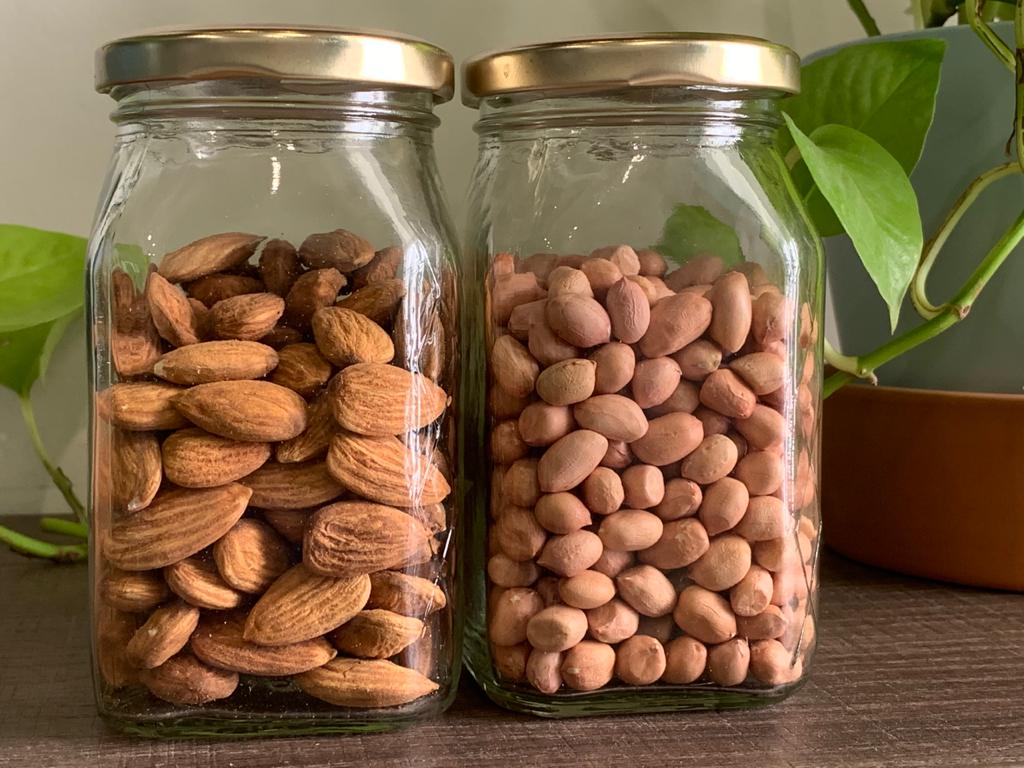
Peanut vs Almond – What to choose?
Almonds, Known as Badam are edible seeds of Princes Dulcis, popularly known as the Almond tree. The fruit of the almond is a drupe, with an outer hull and hard shell with the seed. The shell is then removed to reveal the seed. It is native to the middle east but the US is the largest producer of Almonds now.
Peanuts, known as Mungphali are the seeds of leguminous plants of the Fabaceae family, like bean and pea, due to their substantial amount of oil it is grouped under oilseeds. It is also known as Ground Nut, Monkey Nut, and Goober. They are grown underground of the tree. Peanuts’ taste and nutritional profile is similar to other nuts like Almonds and Walnuts. India, China, and the US are major producers of Peanuts.
Let us compare the nutritional profile of Almonds and Peanuts (Per 100 grams)
| PARAMETERS | ALMOND | PEANUT |
| Energy | 665 Kcal | 567 KCal |
| Protein | 20.8 grams | 25.3 grams |
| Fat | 58.9 grams | 40.1 grams |
| Carbohydrate | 10.5 grams | 26.1 grams |
| Calcium | 230 mg | 90 mg |
| Iron | 5.1 mg | 2.5mg |
| Phosphorus | 490 mg | 350mg |
| Magnesium | 373 mg | 212 mg |
| Copper | 0.97 mg | 0.90mg |
| Manganese | 1.88 mg | 1.10mg |
| Potassium | 742 mg | 727 mg |
| Carotene | – | 37 ug |
| Vitamin E (Tocopherols) | 26 mg | 8.33mg |
| Vitamin B1 (Thiamine ) | 0.24 mg | 0.90 mg |
| Vitamin B2 (Riboflavin) | 0.57 mg | 0.13 mg |
| Niacin B3 (Niacin) | 4.4 mg | 19.9 mg |
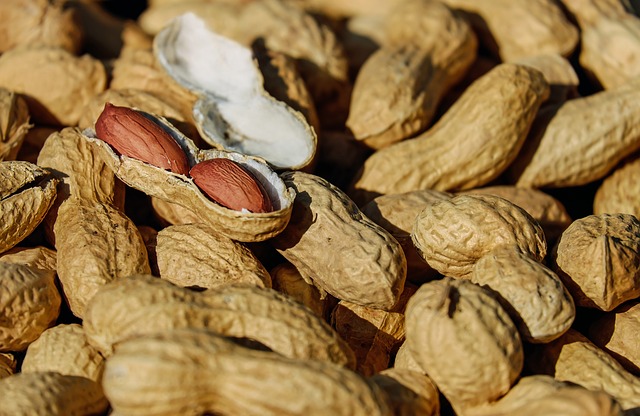
Reference: Nutritive Value Of Indian Foods, National Institute Of Nutrition, ICMR, Hyderabad – 2011.
1. Peanut vs Almond for Energy
If we compare the Calories of peanuts and almonds, we can see Almonds give more energy to the body. At the cellular level, mitochondria are the powerhouse of the cell for energy production. Where there is fire there is smoke, So when the cell synthesizes ATP for energy, it generates many free radicals. As mitochondria are the core of the energy production process, mitochondria are responsible for 90 – 95% of the free radicals in our cells and as a result, are 10 times more exposed to free radicals than any other part of the cell. Constant free radical exposure in mitochondria leads to decreased energy production. Mitochondria try hard to neutralize these free radicals to keep up the energy.
The manganese and copper in almonds are essential components to an enzyme, superoxide dismutase, which gets rid of these free radicals so that your mitochondria can continue to function at maximum production. In addition to manganese and copper, almonds are also packed with riboflavin and magnesium. Both riboflavin and magnesium are critical components to the mitochondria’s ability to create new energy. If either is lacking, energy production is slowed down.
While peanuts also have these same nutrients, the amount in peanuts is much lower than that of almonds. Thus, when it comes to getting more energy during the day, almonds come out on top.
Conclusion: Almonds are good for getting energy. That is the reason it is recommended to start the day with 6-7 overnight soaked almonds.
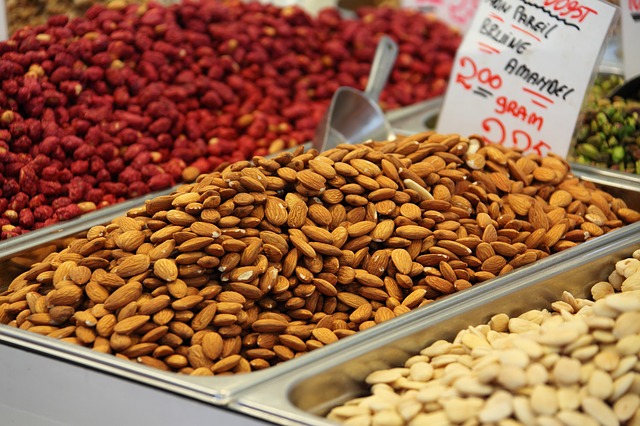
For preventing the common ailments of life, like diabetes, high blood pressure, or high cholesterol, both almonds and peanuts perform magnificently. Both of them are low in carbs but high in proteins and fats.
2. Peanut vs Almond for Diabetes:
Magnesium is one of the important minerals required for blood sugar control. It is shown in a study that around 35% of people with type 2 diabetes are deficient in magnesium. Correcting the levels of magnesium improves insulin function and lowers blood sugar levels. Almonds and Peanuts are good sources of Magnesium. Both Peanuts and Almonds have a low Glycemic Index ( Peanuts GI Value = 13 & Almonds GI value=5) which makes them suitable for people with diabetes.
3. Peanut vs Almond for Blood Pressure:
The healthy monounsaturated fat in almonds contributes to lower blood cholesterol levels and reduced arterial inflammation, which ultimately helps to lower the pressure inside the arteries. on the other hand, Peanuts are naturally high in fiber, magnesium, arginine, and healthy fat, which may make them a potent fighter against cardiovascular disease, the leading cause of death worldwide. According to a study, blood pressure is reduced by 6 mmHg and LDL (bad cholesterol) by 10% just by eating 30 g of them. Thirty grams works out to be one or two handfuls depending on the size of the nut and the palm of your hand. Both Almonds and Peanuts are good sources of magnesium and potassium, essential minerals to control blood pressure.
4.Peanut vs Almond for controlling Cholesterol:
It is a popular talk among people that Nuts are a big no for cholesterol patients. It is a myth to avoid nuts for maintaining cholesterol levels. Biosynthesis of cholesterol happens in the liver with the help of hepatic enzymes. Plants do not have a liver so obviously, they cannot synthesize. Plants have phytosterols which are plant sterols required to maintain HDL levels (Good cholesterol) in the body. HDL lowers the bad cholesterol.
Eating one handful of almonds per day can lead to mild reductions in “bad” LDL, cholesterol, potentially reducing the risk of heart disease. “Bad” LDL cholesterol can become oxidized, which is a crucial step in the development of heart disease. Snacking on almonds has been shown to significantly reduce oxidized LDL.
Peanuts are also a rich source of monounsaturated fatty acids, Polyunsaturated fatty acids, and omega 6 fatty acids. It is a plant-based protein source with 0 trans fats and cholesterol. The rich fatty acids composition of peanuts helps in reducing LDL cholesterol in our body. (1) (2) (3) (4) (5) (6) (7) (8) (9) (10) (11)
Fatty Acid Profile of Almonds and Peanuts
| NUTS (per 100grams) | Omega -6 Fatty Acid | Omega -3 Fatty Acid | Saturated Fatty Acid | Monounsaturated Fatty Acid | Poly Unsaturated Fatty Acid | Trans Fats |
| ALMONDS | 12.32 grams | 0.00 grams | 4358mg | 38,336 mg | 13,215 mg | 0.015 grams |
| PEANUTS | 15.56 grams | 0.00 grams | 8144 mg | 18,337 mg | 11,584 mg | 0.00 grams |
Reference: Indian Food Composition Table, National Institute Of Nutrition, Hyderabad.
Conclusion: Both Peanuts and Almonds are good for Diabetes, Healthy Heart and Cholesterol. The key lies in the portion, as they are rich in healthy fats overdoing them may result in cardiovascular problems. If you are already dealing with hypertension and diabetes, do not eliminate them from your instead limit their consumption. Do not add extra oil or salt to the nuts. Discuss with a certified dietician and healthcare provider to know more details.
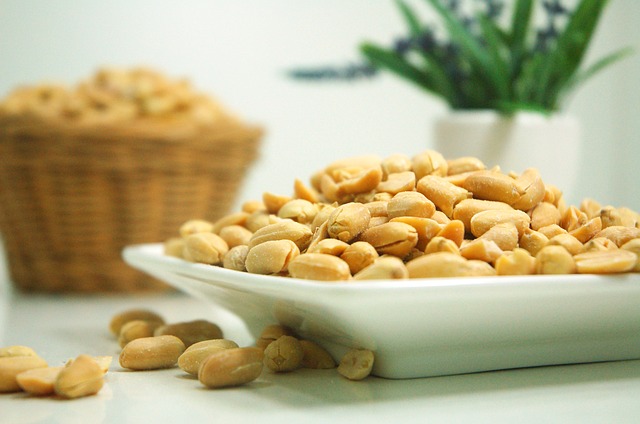
5. Peanut vs Almond for Brain Function:
When it comes to optimizing brain function, there are strong data that almonds are extremely helpful. For example, in a study of 522 people, a daily dose of almonds improved brain function by up to 60%. It may be due to the vitamins, minerals, and antioxidants packed in the nut. In animal studies, almonds boost acetylcholine in the brain which turbocharges memory function.
Peanuts are a unique brain food in that they are packed with niacin. While niacin supplements have never been shown to be helpful, the natural niacin packed in peanuts has been associated with a much lower risk of dementia and Alzheimer’s disease. For example, in a study of 6,158 people living in Chicago, those getting the most niacin from natural food sources were 70% less likely to develop dementia. (12) (13) (14)
Conclusion: Both Peanuts and Almonds are good for healthy brain functions.
6. Peanut vs Almond for Cancer :
For cancer prevention, you want food that can prevent DNA damage, promote DNA repair, reduce tumor growth, prevent spreading, and enhance immune system function. Fortunately, both almonds and peanuts may help in all of these cancer prevention functions.
Resveratrol is a flavonoid found in peanuts. It is found in the pink skin of peanuts. This has potent antioxidant properties that reduce the risk of cancer, Cardiovascular, and Alzheimer’s disease.
Almonds are a rich source of Vitamin E.Vitamin E is a fat-soluble antioxidant, which is built up in the cell membrane and protects from oxidative damage. It, in turn, reduces the risk of cancer. (15) (16)
Conclusion: Both peanuts and Almonds are good for reducing the risk of Cancer. Their potent antioxidant property helps to fight against cancer as well.
7. Peanut vs Almond for Weight Loss :
Almonds are a great nut for people wishing to lose weight. While you would expect that all of the calories and fat in almonds would cause weight gain, the opposite is true. Indeed, a recent study showed that people eating almonds lost 65% more weight than those not eating almonds.
When it comes to weight loss, peanuts have a similar effect. In a study of 14,082 people, even though peanut eaters ate significantly more calories, they weighed less than those not eating peanuts. This finding shows that peanuts increase metabolism.
For weight loss, all nuts, including peanuts, help to fill you up and may increase your metabolism. Thus, as long as you don’t overdo it, nuts and peanuts should help you to maintain a healthy weight.
Both Almonds and Peanuts are low in carbohydrates and rich in proteins and healthy fats. Most of the carbs are in the form of digestible starch which is a good source of fiber. They keep us satiated and reduce hunger pangs as well. (17) (18)
Conclusion: Both Almonds and Peanuts are good for weight loss. They are always considered best for pre and post-workout meals.

8. Peanut vs Almond for Phytonutrients:
Phytonutrients, also called phytochemicals, are chemicals produced by plants. Plants use phytonutrients to stay healthy. For example, some phytonutrients protect plants from insect attacks, while others protect against radiation from UV rays. Among the benefits of phytonutrients have antioxidant and anti-inflammatory activities. Phytonutrients may also enhance immunity and intercellular communication, repair DNA damage from exposure to toxins, detoxify carcinogens and alter estrogen metabolism. As both Peanuts and ponds are rich in photo nutrients they help to maintain a healthy body. These phytonutrients enhance the antioxidant properties of the nuts. (19)
Phytonutrients in Almonds and Peanuts
| Peanuts | Almonds |
| p-Coumaric Acid | Protocatechuic acid |
| Resveratrol | Methylquercetin |
| Isoflavones | Catechin |
| Phytic Acid | p-hydroxybenzoic acid |
| Phytosterols | Vanillic acid |
| Flavanoids | |
| Kaempoferol |
Antioxidant Activity Of Nuts –
| Name | Antioxidant activity DPPH* MG/100 GRAMS |
| Almonds | 406 |
| Peanuts | 747 |
| Cashew nuts | 320 |
| Walnuts | 1541 |
*2,2′ -Diphenyl -1 – picryl hydrazyl (DPPH) radical scavenging activity.
Reference: Antioxidant Activity and phenolic content of fruits, roots, tubers, nuts, and vegetables by Sreeramulu.D, et.al, NIN, Hyderabad.
Conclusion: Both Almonds and peanuts have a good amount of phytonutrients.
9. Peanut vs Almond for allergies:
Nut allergies are one of the most common food allergies in the world. Nut allergy symptoms can range from bothersome to life-threatening. Nut allergy symptoms usually develop rapidly after a person eats or has exposure to nuts. Symptoms can range from a mild runny nose to the life-threatening symptoms of anaphylaxis, which include throat swelling, shortness of breath, and shock. Some of the common symptoms are runny nose, cough, stomach pain, swelling of lips, puffy eyes, and face.
People mistake Nut allergy means only peanut allergy. But that’s not true Peanuts are legumes. Both Almonds and Peanuts are allergic to sensitive people. Their immune system treats nut protein as a foreign substance and reacts to it.
Conclusion: Both Almonds and Peanuts are Allergic to sensitive people, who show immune reactions towards them. They should seek medical attention and avoid the nuts to which they are allergic.
10. Peanut vs Almond in cost
Do I need to say anything about this? When coming to price Almonds are more expensive than Peanuts. In India, Almonds are either imported from the US or the local Mamra badam supply is very less. Peanuts are grown in various regions of India. So the price of Almonds as a whole is quite expensive when compared to peanuts.
Mamra Badam is around 1600 /- per kilograms whereas raw peanuts Cost around 180/- per kilograms in India. So there is a huge price difference between Almonds and Peanuts.
Conclusion: Peanuts are pocket-friendly than almonds.
Important points to remember before going Nuts
1) Select the right nuts
Always prefer local nuts that are grown nearby you. There are three prominent types of almonds available in India- Mamra, Gurbandi & California. Initially, I was very happy in picking the almond packet that is nicely wrapped and getting the most satisfaction eating them. But then, later on, I understood to not ignore the actual nutrient content inside each almond.
How to choose the right Almond?
Mamra– It has Carbohydrate content, more oil & therefore more calories than the other two. Though it has lesser protein content as compared to California almonds. What makes it the first choice is the method of production. Mamra is cultivated organically without using chemicals. Best for the growing kids. Mamra is cultivated mainly in Kashmir and Afghanistan.
California– Almonds are sweeter because of chemical processing. The oil in almonds is removed during this process. Thus the nutritional value of this is very low. It’s ideal for cooking and garnishing. California almonds took over the Indian market as the Indian climate is not ideal for Almond cultivation.
Gurbandi – Almonds are also rich in nutrients, give abundant energy, and are rich in antioxidants. They are slightly bitter. They are cultivated in Afghanistan and exported from there.
Buy Mamra badam online. Click on this link –
Buy Gurbandi badam online. Click on this link –
How to Choose the right peanut?
Carefully check the peanuts before buying them. Check whether they are in or out of the shell. Discard any that are discolored, shriveled, or show signs of mold. Peanuts can sometimes be contaminated with a species of mold (Aspergillus flavus) that produces aflatoxin. The main symptoms of aflatoxin poisoning include loss of appetite and yellow discoloration of the eyes (jaundice), which are typical signs of liver problems.
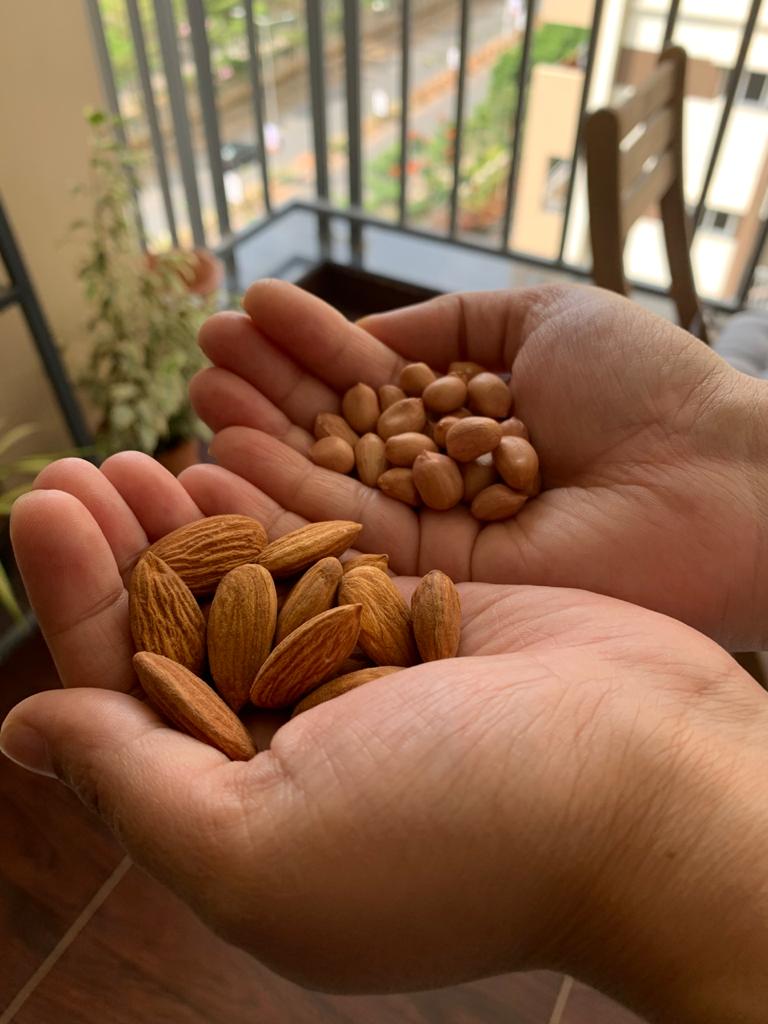
2) Eat Nuts in moderation
Though they are a good source of proteins and low in carbs they are rich in fats. Overdoing Nuts may lead to weight gain and other clinical issues. Yes, moderation is the key.
According to the American Heart Association, if you are following a 2,000 calorie-a-day diet, you should consume 4 to 5 servings a week of nuts, seeds, or legumes. A serving size is equivalent to a small handful (1.5 ounces of nuts) or 2 tablespoons of nut butter.
- 6-7/ day of almonds can be consumed per serving.
- 6-7 grams of peanuts can be consumed per serving.
3) It’s all about smart eating
Always prefer dry roasted or boiled peanuts over salted and deep-fried peanuts. The same goes for almonds, prefer unsalted almonds. Soaking overnight increases the health benefits of almonds.
4) Buy fresh
Only buy fresh almonds and peanuts. Because of the high-fat content in almonds and peanuts, they can quickly turn rancid. Almonds stay fresh longer if you keep them in their shell. Also, dry roasting or keeping them refrigerated or frozen also keeps them fresh longer.
5) Nuts should be your snack, not a meal. Include them in your mid-meal snacks for getting maximum health benefits without side effects.
Bottom Line
Peanut vs almond – Both Almonds and Peanuts are equally healthy. They have their share of health benefits for us. Eat them in moderation to reap their health benefits without side effects. Most people consider almonds healthier than peanuts but scientifically there is no difference. Both Peanuts and Almonds. Include plant proteins, dietary fiber, micronutrients such as copper, magnesium, plant sterols, and phytochemicals. Include these nuts alternatively to bring variation to your diet.

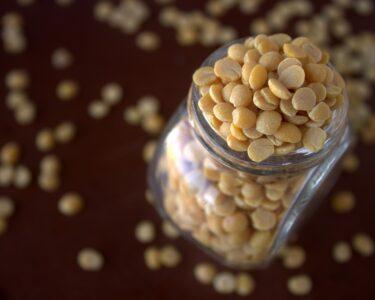

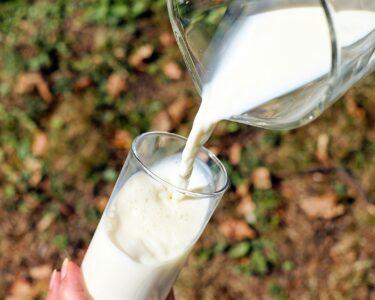

4 Comments